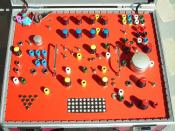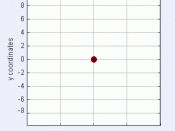Sound surrounds us at all times. The ring of an alarm clock or the whistle of birds may wake us up in the morning. Through out the day, we hear a variety of sounds; for instance, the banging of pots and pans, the roar of traffic, and the voices of people. When we fall asleep at night, we might listen to the sounds of frogs croaking or the wind whistling. All sounds have one thing in common. This being that the vibrations of an object makes every sound. When an object vibrates, it causes the air around it to vibrate. The vibrations in the air travel out from all directions of the object. They then reach our ears, and the brain reads them as sounds. Many sounds we hear travel through the air; however, they can also travel through solid objects like the earth. Our voice is made in the larynx, which is a part of the throat.
Two small pieces of tissue are spread across the larynx. These pieces, called vocal chords, make the opening smaller. Air from he lungs quickly passes trough the tightened chords, causing them to vibrate. The vibrations make the sound of the voice. The tighter the chords are, the faster the vibrations and the higher the resulting sound. If a rock is thrown onto a still pond, several waves travel out from the place where the rock hit the surface. Likewise, sound moves in waves through the air or some other medium. The understanding that sound travels in the form of waves may have originated with the artist Leonardo Da Vinci in 1500. Generally, waves can be spread transversely or longitudinally. In both cases, only the energy of wave motion is spread through medium. No portion of the medium actually moves very far. As...


